#Multi-channel Inventory Management
Explore tagged Tumblr posts
Text
IBR Infotech offers multi-channel inventory management software that helps to manage all your inventory, shipping & returns at one place. Contact us today.
#multi-channel inventory management#multi channel inventory management solution#inventory management software
0 notes
Text
Integrating E-Commerce Solutions across Websites and Apps for Multi-Platform Selling
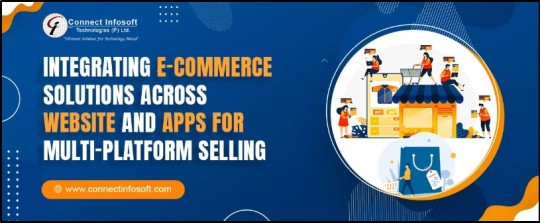
In digital age, e-commerce has become an integral part of the retail industry. With the rapid growth of online shopping, businesses are constantly seeking ways to expand their reach and maximize their sales potential. One effective strategy that has emerged is multi-platform selling, which involves integrating e-commerce solutions across websites and apps to create a seamless shopping experience for customers.
Without a doubt, selling across various platforms is a game changer in the realm of custom eCommerce development, with the potential to propel any organization to new heights. This blog will look at all aspects of multi-platform selling and how it affects the modern eCommerce business scene. Let us get started.
eCommerce Evolution: A New Era of Online Selling
Welcome to the new era of online selling! With the ever-growing popularity of e-commerce, businesses are constantly seeking ways to expand their reach and increase their sales. One such method that has gained significant traction is multi-platform selling, which involves integrating e-commerce solutions across websites and apps.
However, because consumer behaviours and market demands change so quickly, an all-in-one or single eCommerce strategy is insufficient for long-term success. This is where multi-platform selling provides numerous chances for firms looking to increase engagement and diversify their reach.
What Does Multi-Platform Selling Mean?
Multi-platform selling refers to the practice of selling products or services through multiple online channels simultaneously. This approach allows businesses to reach a wider audience and cater to customers' preferences across various platforms, including websites, mobile apps, social media platforms, and marketplaces. By offering a consistent shopping experience across different channels, businesses can enhance customer engagement, increase brand visibility, and boost sales.
Whether you run a little business or a large corporation, if you carefully position your company on these platforms, you will meet all of your customers' expectations by providing a convenient purchasing experience. However, managing sales across several channels is not as simple as it appears; a custom eCommerce development solution is required to optimize the process.
Major Perks of Multi-Platform Selling
There are several significant perks associated with multi-platform selling. Let's take a closer look at some of the major advantages that businesses can enjoy:
1. Expanded Reach: By leveraging multiple platforms, businesses can tap into a larger customer base and target diverse demographics. This broadens their reach and increases the chances of attracting new customers.
2. Enhanced Customer Experience: Multi-platform selling enables businesses to provide a seamless and consistent shopping experience across various channels. Customers can browse products, make purchases, and access support services conveniently, regardless of the platform they prefer.
3. Increased Sales Opportunities: With multiple channels at their disposal, businesses have more opportunities to showcase their products and services and convert leads into sales. Each platform serves as an additional sales channel, increasing the chances of generating revenue.
4. Improved Brand Visibility: Businesses may increase brand awareness and familiarity by maintaining a presence across many media. Consistent branding across channels promotes client trust and loyalty.
5. Better Data Insights: Multi-platform selling allows businesses to gather data from different sources, providing valuable insights into customer behaviour, preferences, and trends. This data can be used to optimize marketing strategies, personalize customer experiences, and drive informed business decisions.
Other key benefits of multi-platform selling include:
Improved conversion rate
Better customer loyalty.
Improved inventory transparency.
Improved customer segmentation.
Mobile commerce trend capitalization
Best Platforms for Multi-Channel eCommerce Business
1. Shopify: Shopify offers a comprehensive e-commerce platform that allows businesses to create and manage online stores. It provides seamless integration with various sales channels, including websites, mobile apps, social media platforms, and marketplaces.
2. Magento: Magento is a highly flexible and scalable e-commerce platform that caters to businesses of all sizes. It supports multi-channel selling by integrating with multiple platforms, enabling businesses to sell across websites, mobile apps, and marketplaces.
3. Etsy: If you want to sell antique, handcrafted, craft supplies, or other one-of-a-kind things online, Etsy is a great place to start. Users may easily access a wide range of product categories on this marketplace, including clothing, jewellery, tools, home, living, kids & babies, and entertainment.
4. Amazon Marketplace: As one of the largest online marketplaces, Amazon provides businesses with a vast customer base and global reach. Selling on Amazon Marketplace can significantly expand the visibility and sales potential of products.
5. eBay: eBay is another popular online marketplace that allows businesses to sell products to a wide range of customers. With its auction-style listings and fixed-price options, eBay offers flexibility for multi-channel selling.
6.Walmart Marketplace: Walmart is a frequently used marketplace that provides excellent prospects for online enterprises. This is a curated e-commerce portal. As a seller, you must meet specified requirements for providing excellent customer service.
7. Facebook Marketplace: This is Facebook's integrated platform that provides fantastic online selling choices to local sellers and small enterprises. This platform is simple to use and helps you promote your goods to a social media-savvy customer audience.
How to Set Up a Successful Multi-Platform Selling Strategy:
1. Identify Target Platforms:
Research and analyse the platforms that align with your target audience and business objectives. Consider factors such as platform popularity, user demographics, and integration capabilities.
2. Seamless Integration:
Select e-commerce platforms that offer robust integration capabilities with various channels. Ensure that your chosen platforms can synchronize product listings, inventory, pricing, and order management across all channels.
3. Consistent Branding:
Maintain consistent branding elements, such as logo, colors, and messaging, across all platforms. This creates a cohesive brand identity and fosters customer recognition and trust.
4. Optimize User Experience:
Provide a user-friendly and intuitive shopping experience on every platform. Optimize website and app performance, ensure mobile responsiveness, and streamline the checkout process to minimize friction and maximize conversions.
5. Data-Driven Decision Making:
Leverage analytics and data insights to monitor and measure the performance of each platform. Identify trends, customer preferences, and areas for improvement, and use this information to refine your multi-platform selling strategy.
6. Customer Support:
Offer consistent and responsive customer support across all platforms. Provide multiple channels for customer inquiries, such as live chat, email, and phone, to ensure a seamless support experience.
7. Cross-promotion:
Cross-promotion is a marketing strategy where two or more parties promote each other's products or services to their respective audiences. It's a mutually beneficial arrangement that can help increase brand exposure, reach new customers, and drive sales.
8. Privacy and Data Security:
- Manage all of your customers' data safely.
- Display all privacy policies to your customers to develop trust.
9. Focus on market trends.
- Keep up with the latest industry developments, platform updates, and client requests.
- Be prepared to change your business approach (if necessary) to stay ahead of the market.
Conclusion:
Multi-platform selling has become a crucial strategy for businesses aiming to thrive in the competitive e-commerce landscape. By integrating e-commerce solutions across websites and apps, businesses can expand their reach, enhance the customer experience, and boost sales. With the availability of various platforms, businesses can choose the ones that align with their target audience and business goals. By implementing a well-planned multi-platform selling strategy, businesses can establish a strong presence across multiple channels, drive customer engagement, increase brand visibility, and ultimately achieve success in the evolving world of e-commerce.
#Multi-Vendor E-Commerce Market Place Software#Best Multi-Channel Listing Software Solutions For Ecommerce Sellers#ECommerce Management Solution#ECommerce Product Management#Best ECommerce Software#Multi-Channel Selling Software#Shipping Software#Multi-Channel eCommerce Inventory Management Software#Product Listing Software#Multichannel Marketplace Software#Connect Infosoft#E-commerce website development#E-commerce website optimization#Mobile commerce optimization#Mobile commerce solutions#Multi-channel sales management
1 note
·
View note
Text
https://ordazzle.com/inventory-management/
Effectively oversee and control your inventory with our E-commerce multi channel inventory management system. Uncover the top inventory management software for your e-commerce business.
0 notes
Text
Looking for an easy way to manage orders from multiple sales channels? Try our Multi-channel Order Management Software. It simplifies the process of handling orders from various platforms like your website, Amazon, eBay, and more. With our software, you can view, process, and track orders all in one place. Say goodbye to the hassle of switching between different systems. Streamline your order management and improve efficiency with our user-friendly solution. Try it now and experience smoother operations for your online business!
0 notes
Text
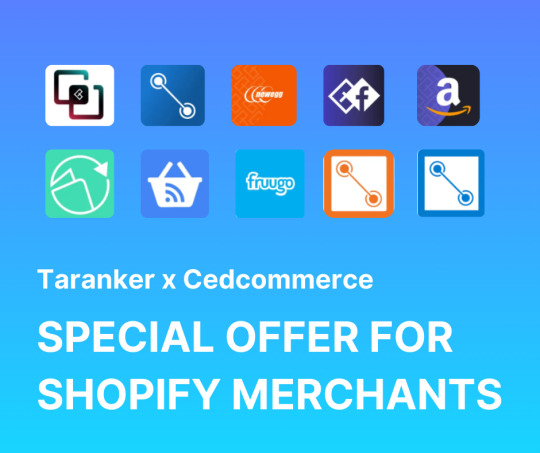
🚨 Big News from Taranker! 🚨 We're thrilled to officially welcome CedCommerce into the Taranker Partner Network — one of the most trusted names in multichannel e-commerce integration! 🎉
With 16 powerful Shopify apps, CedCommerce is helping thousands of online sellers effortlessly scale across marketplaces like Amazon, Etsy, eBay, Walmart, TikTok Shop, and more.
🛒 Whether you're a DTC brand looking to expand into new channels or a seasoned marketplace seller in need of powerful automation tools, CedCommerce has you covered: ✔ Seamless real-time product sync ✔ Automated order & inventory management ✔ Multi-location support ✔ Bulk listing tools ✔ Custom templates, dashboards & more
✨ And here’s the best part: Exclusive Taranker Deals are now unlocked for all Shopify merchants! ✅ Save time ✅ Expand your sales reach ✅ Maximize ROI — all from one dashboard
💡 Check out all CedCommerce apps and claim your special offers here: 👉 https://taranker.com/cedcommerce-apps
Let’s power smarter selling, together.🔗
#taranker#ecommerce#shopify#shopify experts#shopify tips#shopify development company#shopify ecommerce development
2 notes
·
View notes
Text

Starting an e-commerce business can be an exciting venture with immense potential. However, with the opportunities come challenges and uncertainties. Before diving into the world of online retail, it’s crucial to plan carefully and set a solid foundation. Here are some essential tips to consider before launching your e-commerce business:
1. Conduct Market Research
Understanding the market is fundamental to any successful business. Start by identifying your target audience and analyzing competitors. Research trends, customer preferences, and potential gaps in the market. Tools like Google Trends, social media analytics, and industry reports can provide valuable insights. This research will help you tailor your products or services to meet market demands and differentiate yourself from competitors.
2. Define Your Business Model
E-commerce offers various business models, such as B2C (Business to Consumer), B2B (Business to Business), C2C (Consumer to Consumer), and subscription-based models. Determine which model aligns with your goals and resources. Each model has its own set of challenges and requirements, so choose one that best fits your product or service and target market.
3. Create a Solid Business Plan
A comprehensive business plan serves as a roadmap for your e-commerce venture. Outline your business goals, strategies, target audience, marketing plan, financial projections, and operational plan. This document will not only guide your efforts but also help secure funding if needed. A clear plan can keep you focused and organized as you navigate the complexities of launching and running an e-commerce business.
4. Choose the Right E-Commerce Platform
Selecting the right e-commerce platform is crucial for the success of your online store. Popular platforms like Shopify, WooCommerce, Magento, and BigCommerce each offer unique features and capabilities. Consider factors such as ease of use, scalability, customization options, payment gateways, and integration with other tools. The platform should align with your business needs and provide a user-friendly experience for both you and your customers.
5. Develop a User-Friendly Website
Your website is the face of your e-commerce business. Ensure it’s designed to be user-friendly, visually appealing, and optimized for mobile devices. A clean, intuitive layout with easy navigation will enhance the shopping experience and reduce cart abandonment rates. Focus on high-quality images, detailed product descriptions, and a seamless checkout process. Additionally, implement search engine optimization (SEO) strategies to improve your site’s visibility in search engines.
6. Implement Secure Payment Processing
Security is a top priority in e-commerce. Customers need to trust that their payment information is safe. Choose a reputable payment gateway and ensure your website uses SSL certificates to encrypt data. Additionally, offer multiple payment options, including credit/debit cards, digital wallets, and other payment methods that are popular with your target audience.
7. Plan Your Logistics and Supply Chain
Efficient logistics and supply chain management are vital for e-commerce success. Develop a strategy for inventory management, warehousing, and shipping. Decide whether you’ll handle fulfillment in-house or partner with third-party logistics providers. Consider shipping options, delivery times, and costs. A smooth and reliable fulfillment process can significantly impact customer satisfaction and repeat business.
8. Craft a Marketing Strategy
Effective marketing is essential to drive traffic and sales to your e-commerce store. Develop a multi-channel marketing strategy that includes social media, email marketing, content marketing, and paid advertising. Create engaging content, run promotions, and leverage social media platforms to build brand awareness and attract customers. Monitor and analyze the performance of your marketing efforts to refine your strategies over time.
9. Focus on Customer Service
Exceptional customer service can set your e-commerce business apart from competitors. Provide multiple channels for customer support, such as live chat, email, and phone. Ensure timely responses to inquiries and resolve issues promptly. Building strong customer relationships and encouraging feedback can enhance customer loyalty and drive positive reviews.
10. Monitor and Adapt
The e-commerce landscape is constantly evolving. Regularly review your business performance, track key metrics, and gather customer feedback. Stay informed about industry trends and technological advancements. Be prepared to adapt your strategies and operations based on insights and changes in the market.
#ecommerce#marketing#business#digitalmarketing#ecommercebusiness#entrepreneur#onlineshopping#website#seo#webdesign#b#marketingdigital#onlinebusiness#branding#shopify#smallbusiness#socialmediamarketing#webdevelopment#online#amazon#shopping#onlinestore#onlineshop#design#ecommercewebsite#dropshipping
5 notes
·
View notes
Text
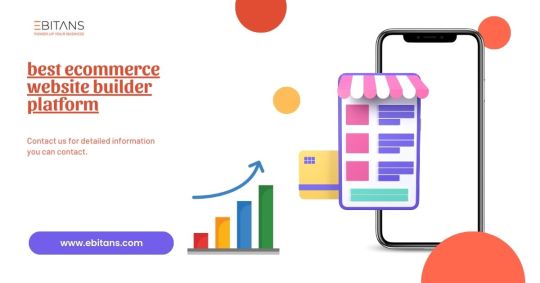
Finding the Best E-Commerce Website Builder for Your Business
Choosing the right e-commerce website builder is crucial for creating a successful online store. With numerous options available, selecting the best platform can significantly impact your business’s growth and efficiency. Here’s a guide to help you find the best e-commerce website builder that suits your needs.
1. Ease of Use
The best e-commerce website builders should offer an intuitive interface that simplifies the process of setting up and managing your store. Look for platforms with user-friendly drag-and-drop editors and customizable templates. These features make it easier to create a professional-looking website without requiring advanced technical skills.
2. Essential Features
Evaluate the core features each builder offers. Key functionalities include product management, secure payment processing, inventory tracking, and shipping options. Advanced features such as SEO tools, marketing integrations, and analytics capabilities can further enhance your online store’s performance.
3. Design Flexibility
A visually appealing and unique online store helps attract and retain customers. Choose a builder that provides a range of customizable templates and design options. This allows you to tailor your site’s appearance to align with your brand’s identity and create a memorable shopping experience.
4. Scalability
As your business grows, your e-commerce platform should be able to scale with you. Opt for a builder that offers flexible plans and additional features to accommodate increased traffic, a larger product range, and expanded functionalities. Scalability ensures your website remains effective and efficient as your business evolves.
5. Support and Resources
Reliable customer support and comprehensive resources are essential for troubleshooting and ongoing management. Select a builder that provides responsive support through various channels, such as live chat, email, or phone. Additionally, access to tutorials, guides, and community forums can be valuable for resolving issues and learning best practices.
Top Recommendations
Shopify: Known for its ease of use and robust feature set, Shopify is ideal for businesses of all sizes. It offers a wide range of customizable templates, integrated payment options, and excellent customer support.
WooCommerce: Perfect for those familiar with WordPress, WooCommerce provides extensive customization and flexibility. It’s suitable for businesses with specific needs and technical capabilities.
BigCommerce: Renowned for its scalability, BigCommerce is a great choice for growing businesses. It offers built-in features for SEO, multi-channel selling, and advanced analytics.
Wix: Wix combines simplicity with design flexibility. Its drag-and-drop editor and diverse templates make creating a visually appealing online store easy.
Squarespace: With its elegant design templates and user-friendly interface, Squarespace is perfect for businesses seeking a stylish and functional online store with minimal effort.
READ MORE >>>>
2 notes
·
View notes
Text
YOUR MUSE'S INVENTORY. [original meme from @treasurechestrpmemes.]
rules: list the things your muse carries in their pockets or bags in their every day life. (optional: explain their significance.) repost, don’t reblog.
The Nurse Shark || Beth Riley

I. Phone ~ Perpetually at 6-15% battery yet never actually runs out of power. She has the standard apps on it, plus ones she uses for work reference: NDR, PDR, CCN, Epocrates Essentials, Medscape, Pedi-Stat, and so on. Beth does have an Instagram account but rarely uses it. She also has a YouTube channel where she doles out advice on occasion. She isn't fond of social media. She does, however, enjoy having portable music. Her Hanai-Sister Jay is her ICE contact, and the first number on speed dial. The next 7 numbers are various take out places with delivery options.
II. Bone athame ~ This is probably Beth's most important item, one she never forgoes. Over eight inches in length, carved with sigils and symbols of her craft, this is her most unique foci, and also her most personal as it is made from her own bone, stained with her own blood. It was created during her initiation into her tradition with all the seriousness one can imagine. The ordeal was gruelling and is not something she really talks about. Typically if someone sees it, either their circumstances are dire or they've made a very final mistake. If Beth can't wear it openly or tuck it into her bag, she does have a space for it that isn't for the squeamish. Best not to ask questions.
III. A full advanced trauma and surgical kit ~ literally everything she would need to preform surgery in the most inconvenient place possible. And while the kit might actually weigh a full third or so of her body weight, there's still a coincidental effect overhanging it. She received it as a gift from her Hanai-Sister. Beth keeps everything fully stocked with fresh supplies.
IV. Leatherman Raptor ~ Sometimes you need the right tool and quickly. Can't waste time searching through your bag. Which is where the raptor comes in handy for Beth. The multi-tool combines stainless steel folding medical shears, a strap cutter, a ring cutter, a ruler, an oxygen tank wrench, and a carbide glass breaker, for mobile/crash emergencies. V. Her brother's zippo/matches ~ For reasons, sometimes a girl needs fire. VI. Coffee ~ Not exactly carried in her bag, Beth typically is never seen out of her house without roughly 30 ounces of Kona coffee, often time a quad shot vanilla coconut milk or soy latte.
VII. Snacks ~ nuts, seeds, granola, shelf-stable applesauce or pudding, maybe pop-tarts or whatever small and quick thing she can get her hands on. Great for a quick boost to one's blood sugar, and often time the only meal she can manage to get in a typical day.
VIII. Burt's Bees Lip Balm ~ Beth keeps two tubes of it with her all the times, a coconut & pear clear balm, and a tinted lip balm usually hibiscus or red dahlia shares.
IX. A novel or two ~ whatever book Beth is reading at the time. She prefers actual books with pages. She has no preference between paper or hard back.
X. A spare pair of slippahs ~ You never know when you're going to have a flip-flop incident, so it's better to be prepared just in case.
XI. A few travel sized toiletries ~ clean pair of underwear {or bikini bottoms}, toothbrush and paste, hair brush, deodorant. Shampoo and conditioner, moisturiser, soap, lotion, her favourite essential oil perfume, dental floss. XII. Wallet ~ ID, credit cards, debit card, somewhere in the neighbourhood of one hundred dollars in various paper money, half used subway passes, upwards of four half used loyalty cards for Jay's coffee shop, spare car key, spare house key. And three non-slip, tangle free hair elastics {rubber bands}. XIV. Almost comically oversized sunglasses ~ {which can, if need be, slip over her regular reading glasses. Beth does not like contacts. XV. Her work keys/hospital credentials. Because she works. And stuff.
tagged by: the ever lovely Bun who pretends to be in charge of @hxllblazer tagging: Heave-ho, all together {but particularly @kylo-wrecked and @nightmarefuele}
#Glowing Like The Metal|Dash Games#She's Talking to Angels {Bethisms}#{{Yes-- essentially Beth can absolutely survive a weekend with the things she carries with her.}}
9 notes
·
View notes
Text
How do you sell Amazon products on a Shopify site? Is a Shopify site necessary? Is there a better platform out there?
Selling Amazon products on a Shopify site can be a strategic move to broaden your reach and increase sales. While it's not mandatory to use Shopify, it offers a user-friendly platform that provides numerous benefits for sellers like us.
Firstly, Shopify allows you to sync your Amazon products with your Shopify store, creating a centralized hub for managing inventory, orders, and customer data. This ensures that changes in product details, pricing, or availability on Amazon are reflected on your Shopify site.
Having a dedicated Shopify store can enhance your brand presence and customer experience. You have the flexibility to customize your store's design to create a brand image for your customers. This brand consistency fosters trust and loyalty, leading to increased sales.
Additionally, a Shopify store provides you with more control over customer communication. You can implement targeted marketing strategies, email campaigns, and promotions specific to your Shopify audience. This direct engagement can help build a loyal customer base and drive repeat business.
In terms of whether Shopify is necessary, it depends on your business goals. If you're solely focused on selling through Amazon, a Shopify site may not be essential. However, if you’re looking to diversify your sales channels, establish a distinct brand presence, and gain more control over the customer experience, Shopify can help.
While Shopify is a popular choice, it's not the only platform available. Alternatives like WooCommerce and BigCommerce offer similar functionalities. The choice depends on your specific needs and budget. It's crucial to evaluate each platform's features, ease of use, and capabilities before making a decision.
A step further, for those considering multi-channel sales, is to pick an integration service provider to automate your business processes. Be it product listing, inventory, order management, or real-time data sync, an integration service can be an invaluable asset. Once these manual tasks are taken care of, it leaves more room for strategizing and expansion. I have benefited greatly from my experience with CedCommerce’s Amazon Shopify Channel.
In conclusion, selling Amazon products on a Shopify site is a strategic move that can offer numerous benefits. While Shopify is a robust option, other platforms may suit your needs, so it's essential to research and choose the one that aligns with your business goals and preferences.
#ecommercebusiness#shopify#ecommercestore#cedcommerce#ecommerce#shopifyseller#amazonseller#woocommerce#amazon#remote work#amazon products
3 notes
·
View notes
Text
From Concept to Collection: Strategies for Managing a Fashion Line

In the world of fashion, bringing a concept to life and creating a cohesive collection is a multi-faceted process that demands creativity, precision, and effective management. Managing a fashion line involves a range of tasks, from designing and production to marketing and distribution. In this article, we'll explore the essential strategies to guide you from the initial concept to a successful fashion collection.
Conceptualization and Design
The journey of a fashion line begins with an idea. It could be inspired by a theme, a specific style, or a unique concept. Start by sketching your ideas, creating mood boards, and gathering inspiration from various sources. Remember, the key to a successful collection is a strong and cohesive concept that runs through every piece.
Research and Market Analysis
Before you delve into production, it's crucial to conduct thorough research and market analysis. Understand your target audience, their preferences, and the current fashion trends. Identify gaps in the market that your collection can fill. This research will help you tailor your designs to meet the demands of your intended customers.
Budgeting and Financial Planning
Managing a fashion line involves substantial financial considerations. Create a detailed budget that accounts for design and production costs, marketing expenses, overhead, and other financial aspects. Staying on top of your budget is crucial to the long-term success of your collection.
Sourcing Materials and Production
Selecting the right materials is a pivotal aspect of creating a successful fashion line. Partner with reliable suppliers and manufacturers who can provide the quality materials you need. Ensure that your production process is efficient and maintains high standards to meet the demands of your collection.
Quality Control and Testing
Rigorous quality control is essential to maintaining the integrity of your fashion line. Regularly inspect your pieces for any defects or inconsistencies. Test your designs to ensure they stand up to wear and tear. Consistently high-quality products are key to establishing a strong brand reputation.
Branding and Marketing
Once your collection is ready, it's time to promote it to your target audience. Develop a strong brand identity and marketing strategy. Utilize social media, websites, and partnerships to create buzz around your fashion line. Effective branding and marketing can significantly impact your collection's success.
Distribution and Sales Channels
Decide on the distribution channels for your fashion line. Will you sell directly to consumers through your website, collaborate with retailers, or explore other options? Each channel has its own requirements, so choose those that align with your collection's goals.
Inventory Management
Efficient inventory management is crucial for both cost control and ensuring you meet customer demand. Utilize inventory software and strategies to track stock levels and make informed decisions regarding restocking or discontinuing specific items.
Customer Feedback and Adaptation
Listen to your customers. Collect feedback and reviews on your fashion line. Use this information to adapt and improve your designs and offerings. Customer satisfaction and loyalty are essential to building a successful brand.
Sustainability and Ethical Practices
Fashion consumers are increasingly concerned about sustainability and ethical practices. Consider how you can incorporate sustainable materials and ethical production methods into your fashion line. This not only appeals to conscious consumers but also contributes to the long-term health of the fashion industry.
Managing a fashion line is a multifaceted endeavor, requiring a combination of creativity and business acumen. By conceptualizing your vision, conducting research, managing your finances, producing quality items, and marketing effectively, you can navigate the journey from concept to a thriving fashion collection.
Indian Institute Of Fashion & Design- IIFD is the Best Fashion Design College in India. IIFD is The most popular and Leading Fashion Design Institute which offers professional training in Fashion Design, textile design, and interior design Courses in India. IIFD is committed to excellence, creation, and growth for their students through ongoing educational activities, and live sessions, They offer an industry-ready curriculum that helps you improve your practical knowledge and skills.
Remember, the key to success lies in meticulous planning, dedication, and a commitment to delivering high-quality fashion that resonates with your target audience. With the right strategies and a passion for your craft, your fashion line can make a significant impact in the ever-evolving world of fashion.
#fashion design tips#fashion education#fashion design education#fashion careers#education#iifd#iifd chandigarh#fashion design institute#fashion designing courses
3 notes
·
View notes
Text
Seamless Connections: Travel CRM with API Integration
Introduction:
Travel agents must adapt quickly to changing consumer needs and market trends if they want to stay in business. Travel CRM with Application Programming Interface (API) integration has emerged as a solution that empowers agencies to streamline their operations, personalize client experiences, and stay at the forefront of the digital transformation.
The Power of Integration For Travel Industry : Travel CRM with API:
Effective Data Transfer:
The Travel CRM can easily exchange data with other external systems, including airline and hotel booking systems, thanks to API connection.
Real-time data updates minimize human mistake and challenging data entry.
Personalization:
CRM systems enriched with API data can provide personalized recommendations and offers to clients.
Clients feel more valued when offered tailored travel options.
Multi-Channel Communication:
API integration allows travel businesses to communicate with customers through multiple channels, such as email, SMS, and social media.
This multi-channel approach enhances client engagement and marketing outreach.
Inventory Management:
API integration with booking systems ensures accurate and up-to-date inventory management.
Travel agencies can provide real-time availability and pricing information to clients.
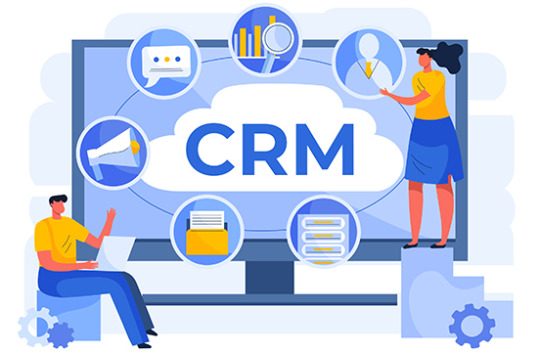
Travel CRM with API Integration: Practical Applications:
Client Data Enrichment:
API integration enhances client profiles with data from external sources, offering a comprehensive view of client preferences and behavior.
Agencies can provide highly personalized recommendations and services.
Booking and Reservations:
Travel agencies can instantly access real-time availability and pricing data through API integration.
This facilitates efficient booking and reservation processes.
Marketing and Communication:
Integration with email and SMS APIs allows for targeted marketing campaigns.
Agencies can reach clients with relevant travel offers and updates.
To Be Conclude:
The integration of Travel CRM with API opens new doors for travel agencies to provide enhanced customer experiences, streamline operations, and remain competitive in a fast-paced industry. These two blogs illustrate how IVR and API integration offer solutions that transform the way travel agencies connect with clients and manage their operations, ultimately leading to increased efficiency and customer satisfaction.
#crm company#crm development#b2b travel software#travel crm with api#ivr solution#ivr with travel crm
2 notes
·
View notes
Text
Top Challenges Web Development Companies Solve for Growing Brands
As your business grows, so do the expectations from your website. It’s no longer just a digital brochure—it’s your sales engine, lead generator, support channel, and brand identity rolled into one. Yet, as demands increase, many companies begin facing technical, design, and strategic roadblocks that can stall momentum.
This is where a Web Development Company becomes an essential partner. From handling complex integrations to future-proofing your platform, development agencies specialize in solving challenges that in-house teams may not be equipped to manage at scale.
1. Scaling Website Performance Under Growing Traffic
A major concern for any growing brand is website performance. As user traffic spikes, especially during product launches or campaigns, slow page loads or downtime can cost conversions and damage trust.
Professional development companies address this by:
Optimizing server architecture
Implementing caching strategies
Using CDNs for faster content delivery
Migrating to scalable cloud environments like AWS or Azure
These technical improvements ensure your site remains fast and available—no matter how quickly your business scales.
2. Managing Complex Integrations Across Systems
Growth brings more tools into your ecosystem—CRM platforms, inventory management, analytics tools, payment gateways, and marketing automation systems. The challenge is making all these systems communicate efficiently.
Web development companies build robust APIs and custom integrations that:
Sync data across platforms in real-time
Improve backend workflows
Enable personalized user experiences
Reduce manual errors
This level of technical harmony allows businesses to automate operations and focus more on growth strategies.
3. Ensuring Security and Compliance
As your brand attracts more users, it also becomes a bigger target for cyber threats. Ensuring data protection and regulatory compliance becomes non-negotiable.
A development agency strengthens your security through:
SSL implementation
Secure login and authentication systems
Regular vulnerability scanning
Compliance with global standards (like GDPR, CCPA, HIPAA)
With increasing customer expectations around data safety, proactive security is one of the most critical areas that expert developers address.
4. Creating Seamless Multi-Device User Experiences
Today’s users interact with your brand across desktops, tablets, and smartphones. An inconsistent experience on any of these devices can lead to lost engagement and sales.
Development companies apply responsive design principles and rigorous cross-browser testing to deliver:
Consistent UI/UX across all screen sizes
Intuitive navigation and interaction models
Faster mobile performance
This ensures that whether your customer is shopping, booking, or reading your blog—they enjoy a seamless experience every time.
5. Handling Content Management and Workflow Bottlenecks
Growing brands often struggle with content management. Outdated CMS platforms or poor backend architecture make publishing, editing, or localizing content a painful process.
A web development partner can:
Customize or migrate your CMS to a more scalable platform (like WordPress, Webflow, or headless CMSs)
Streamline your editorial workflows
Enable role-based access and approvals
This boosts content efficiency and lets your team stay focused on brand messaging instead of technical hurdles.
6. Maintaining Brand Consistency During Expansion
As businesses expand into new markets or launch new services, it becomes challenging to maintain brand consistency across all touchpoints.
Web development companies address this with:
Design systems and reusable components
Scalable style guides
Modular content blocks that adapt to new campaigns
This approach keeps your digital presence uniform while supporting the flexibility your marketing team needs.
7. Driving Continuous Optimization
Growth isn’t just about adding new features—it’s about refining what already exists. Development partners continuously test, monitor, and iterate to improve:
Conversion rates
Page performance
Funnel drop-offs
Technical SEO
By using tools like heatmaps, A/B testing platforms, and performance trackers, they help brands evolve based on real user behavior, not guesswork.
Conclusion
As your brand scales, so do the complexities of your digital infrastructure. A growing business needs more than a basic website—it requires a platform that evolves alongside it. Whether it’s integrating systems, securing customer data, optimizing for mobile, or scaling performance, these challenges can’t be left to chance.
That’s why partnering with a Web Development Company is not just helpful—it’s a strategic necessity. With deep technical knowledge and a forward-thinking approach, they ensure your website not only keeps up with growth but actively drives it.
0 notes
Text
What’s the Easiest Way to Manage Multi-Channel Inventory?
Managing inventory across multiple platforms can be complex—but it doesn’t have to be. With multi-channel e-commerce inventory management, businesses can sell on various platforms, meet customer demands effortlessly, and grow their revenue with confidence.
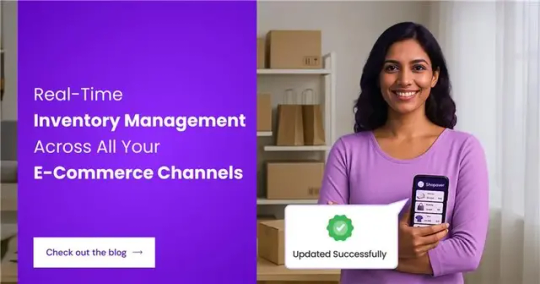
Let’s explore how modern retailers can streamline their inventory, which tools help, and why this strategy is essential in today’s competitive market.
What Is Multi-Channel E-Commerce Inventory Management?
Multi-channel inventory management refers to tracking and managing product stock across various sales channels—like your website, marketplaces (Amazon, Flipkart), and physical stores—in real time.
Instead of juggling spreadsheets or manually updating stock on each platform, this system centralizes everything. It ensures:
Real-time stock updates
No more double selling
Accurate order fulfillment
Improved customer satisfaction
The Challenge: Inventory Chaos Without Integration
Selling on multiple platforms without integration can lead to serious issues:
Overselling
Stockouts
Order cancellations
Lost revenue
This is why modern businesses adopt centralized inventory tools that sync across all platforms and warehouses.
Why Warehouse Inventory Management Is Key
A warehouse inventory management system is the backbone of multi-channel retail. It helps businesses:
Track stock movement
Optimize storage
Route orders efficiently
Forecast demand
When connected to cloud technology, it provides real-time visibility and control, which is crucial for scaling operations.
Smart Product Inventory Management
Your inventory must match your listings—always.
With automation tools, stock levels are updated across all platforms as soon as a sale happens. Advanced features include:
SKU mapping
Batch tracking
Expiry date monitoring
This ensures accurate fulfillment and fewer returns.
Barcode Scanning = Zero Errors
Barcode scanning systems make inventory handling faster and error-free. From procurement to delivery, every product can be scanned and tracked.
When integrated with your multi-channel inventory software, barcode scanning ensures:
Instant stock updates
Reduced manual errors
Better inventory accuracy
The Best Way to Manage Multi-Channel Inventory

If you're managing dozens or hundreds of SKUs across channels and warehouses, automation is your best friend.
The ideal solution? A cloud-based inventory management system that offers:
Sales channel integration
Warehouse syncing
Barcode support
Detailed analytics
It helps you identify bestsellers, dead stock, and discrepancies in one place.
Omnichannel Retailers: Bridge Online + Offline Stock
Retailers operating both offline and online need tight sync between in-store POS and e-commerce platforms.
A connected store inventory management system ensures:
In-store sales instantly reflect online
Staff can manage restocking and returns smoothly
Inventory stays accurate across locations
Manufacturing Inventory Integration
Manufacturers deal with raw materials, WIP, and finished goods. A manufacturing inventory system, when integrated with e-commerce channels, allows:
Direct sales to consumers or B2B buyers
Real-time production and stock tracking
Better supply chain control
Inventory Solutions for Small Businesses
Even small retailers face inventory challenges. A stock control system for small business operations helps avoid:
Stockouts
Over-ordering
Revenue loss
Look for an easy-to-use tool with:
Cloud access
Barcode scanning
Low-stock alerts
Reporting dashboard
POS + Inventory = Smarter Retail
A combined POS and inventory system ensures every in-store transaction updates your central stock in real-time. This leads to:
Faster restocking
Better sales insights
Reduced inventory mismatches
Cloud-Based Inventory: Future-Ready Operations
Cloud technology transforms how businesses manage inventory:
Access from anywhere
Automatic syncing across users
Secure data storage
Scalable as your business grows
With cloud and multi-channel management combined, your entire team stays updated—no matter where they work.
Meet Shopaver: Smart Inventory for Smart Retailers
Shopaver is your all-in-one platform for managing multi-channel e-commerce inventory with ease. It connects your:
Online store
Marketplaces
POS systems
Warehouses
With Shopaver, manage everything from one dashboard—whether you sell fashion, electronics, beauty, or more. Automate stock updates, reduce errors, and grow your business with confidence.
Conclusion
In today’s competitive e-commerce environment, multi-channel inventory management isn’t just a convenience—it’s a necessity.
From automation to barcode scanning, from cloud access to real-time updates—everything contributes to smoother operations and higher customer satisfaction.
Start simplifying your inventory today with Shopaver.
#MultiChannelInventory#EcommerceInventory#InventoryManagement#WarehouseManagement#StockManagement#RetailTech#POSIntegration#BarcodeInventorySystem#CloudInventory#InventoryAutomation#InventorySoftware#EcommerceSolutions#InventoryControl#OmnichannelRetail#SmallBusinessInventory#ProductInventoryTracking#Shopaver#SmartRetail#SellEverywhere#UnifiedInventory
0 notes
Text
Streamline Your Business with Order Management CRM Software
In present competitive business enviromenet, manually managing orders is a hectic and time-consuming process. So many businesses face challenges while managing orders like Delayed Orders Delievery, unorganised orderd details, missplaced orders, or mismatch inventories. This is where an Order Management CRM Software becomes essential. The software helps businesses to handle large orders in an efficient, orgainised, smart way.
What is Order Management CRM Software?
Order Management is an advanced digital tools that help you to track and manage the whole process of order from order placement to order delievery.
It allows businesses to manage customer orders, update stock levels, process invoices, and monitor deliveries, all in one place. This ensures that no order is missed and every customer gets timely service.
Key Features of Order Management CRM
Order Tracking: From this feature you can monitor, track your order status in real time like it's pending, cancelled, , shiped, delievered or confirm.
Inventory Management: This feature helps you in ensuring that your stock never goes out, never overstock so that you can manage your sale.
Customer Records: Here, system itself record the purcase history of each and every customer, which helps you to improve customer service and building long lasting relationship.
Invoice & Payment Handling: Automatically generate invoices and manage payment updates.
Notifications & Alerts: Get timely reminders about low stock, delayed orders, or pending payments.
Why Your Business Needs It
When a business uses Advanced order management CRM Software, it improves the way of managing orders and saves a lot of time for you. Whether you run a small online store or a large distribution company, this tool helps you:
Avoid manual errors
Deliver orders faster
Reduce customer complaints
Track everything from one dashboard.
Required less paperwork
Focus on more growth.
This kind of CRM software becomes a must-have for businesses with high order volume.
Benefits of Order Management CRM
Better Efficiency: Automate routine tasks and speed up order processing.
Real-time Insights: Know which products are in demand and how your sales perform.
Improved Customer Experience: Keep your customers updated with timely communication.
Multi-channel Support: Manage orders coming from websites, social media, or offline stores all in one place.
Who Can Use It?
The software is not limited for one industry, this software widely used in e-commerce, manufacturing, wholesale, and service based businesses.
Whether you’re selling physical products or offering services, having a clear order process improves customer satisfaction and helps you grow.
Final Thoughts
If you are still depenedent on spreadsheet, o phone calls for managing orders, this is the time to adopt an advanced CRM Software.
A Modern Order Management CRM Software can change the way of managing orders by simplifying business operations and improving service quality.
Many businesses are already making the switch — don’t get left behind. Choose a system that fits your needs and start delivering better customer experiences today.
#crmsoftware#groweoncrm#leadmanagementcrmsoftware#serviceticketmanagement#groweondigitalprivatelimited#marketing#apis integration#crm software#leadmanagementsolution
0 notes
Text
Retail ERP Software That Grows with Your Business – Try It Now
In today’s fast-paced retail environment, businesses—both small and large—are under constant pressure to streamline operations, manage inventory efficiently, and deliver superior customer experiences. This is where the right ERP for retail industry can transform your operations and fuel long-term growth.
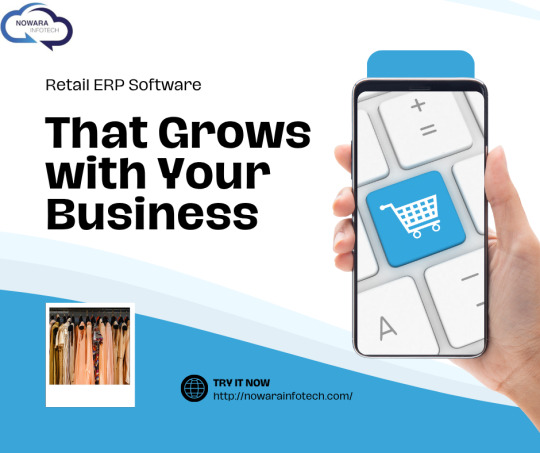
Whether you operate a single-store boutique or a multi-chain retail enterprise, choosing the right ERP partner like Nowara Infotech can mean the difference between chaos and control. This article explores the key skills business owners gain when adopting retail ERP solutions, drawing parallels with the strategic decision-making required in technical fields like online master’s in data science—which also teaches scalability, integration, and data insight.
Why Retailers Need ERP Now More Than Ever
Retailers today are grappling with multiple challenges: fragmented supply chains, rising customer expectations, and evolving sales channels (online, offline, mobile). Manual systems are no longer viable.
Here’s what a modern ERP software for retail industry addresses:
Real-time inventory management
POS (point of sale) synchronization
Multi-location tracking
Vendor and purchase management
Customer relationship optimization
According to a 2024 Statista report, over 67% of mid-sized retail businesses that adopted ERP saw improved operational efficiency and inventory accuracy within 6 months. This is why retail ERP solutions are no longer a luxury—they’re a necessity.
What You’ll Learn by Implementing ERP: Transferable Business Skills
Adopting ERP software for retail industry is like earning a degree in business efficiency. Similar to what students learn in a master’s in data science, you’ll gain the ability to:
1. Make Data-Driven Decisions
Just as data scientists leverage insights for strategic value, retailers using ERP can:
Track best-selling products in real time
Forecast stock demands during festivals
Understand peak shopping hours via dashboards
2. Automate Repetitive Tasks
Retail ERP solutions automate everything from:
Barcode-based inventory entry
GST-compliant invoicing
Supplier communication and reorders
This reduces human error and lets staff focus on customer engagement.
3. Improve Collaboration Across Departments
From inventory to sales to finance, ERP bridges internal silos. Everyone works from a single source of truth.
Top Features of Nowara Infotech’s ERP for Retail Industry
Nowara Infotech is known for providing scalable, affordable, and feature-rich ERP for retail business. Here’s what makes them stand out:
Omnichannel Capabilities
Whether you sell online, offline, or via social commerce, Nowara’s ERP unifies transactions, promotions, and inventory across all platforms.
GST & Compliance Ready
No more scrambling during audits. Everything is digitized, auto-updated, and compliant with Indian government standards.
Mobile POS & Reporting
Owners can view reports, monitor stock, and approve orders right from their phone. This is especially useful for small retailers with limited staff.
Multi-Store & Warehouse Integration
Ideal for larger businesses, Nowara’s ERP helps track stock across cities, schedule transfers, and detect shrinkage in real time.
User Journey: From Discovery to Implementation
Let’s walk through the stages retail businesses typically go through:
Awareness Stage:
You realize manual spreadsheets and cash registers are slowing you down. Mistakes happen. Stockouts are frequent. Sales data is a mess.
Keyword fit: Looking for “erp for retail industry” or “erp for retail business” that’s easy to use?
Consideration Stage:
You explore different retail ERP solutions, compare features, pricing, scalability, and industry specialization. You might Google “best ERP software for retail industry India.”
You find Nowara Infotech has excellent reviews, responsive support, and India-specific compliance built-in.
Decision Stage:
You book a free demo. After seeing the ease of use and ROI potential, you implement Nowara’s system and transform your business within weeks.
Case Study: A Small Retailer’s ERP Success Story
Consider Ritu’s Fashion Boutique, a small shop in Nagpur. Before Nowara’s ERP:
Inventory was manually tracked
Monthly losses occurred due to mismatched billing
Staff wasted time on reorder processes
After 3 months of ERP usage:
Inventory accuracy improved by 80%
Billing was automated and error-free
Sales increased by 35% due to faster checkout
Conclusion: Ready to Grow Your Retail Business?
If you’re serious about taking your business to the next level, it’s time to move beyond manual processes. Nowara Infotech’s ERP for retail industry adapts to your business size, goals, and challenges—offering a future-ready platform for sustainable success.
Ready to get started? Book your free ERP demo now and discover how seamless retail operations can be!
0 notes
Text
Shine Bright with Control: Inventory Management Features from LISTANY for Jewelry eCommerce
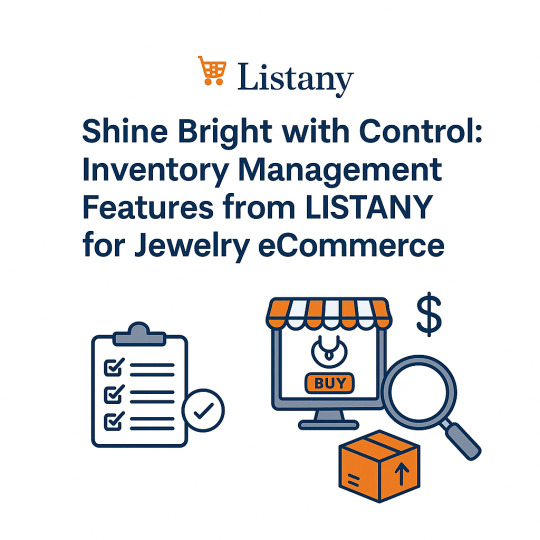
A boutique jewelry brand in Jaipur just launched their online store. Orders started rolling in — a bridal kundan set here, a minimal gold nose ring there, a few silver oxidized bangles for a trendy college crowd. Sounds exciting, right? But within two weeks, chaos set in.
Some designs were oversold, some were never shipped, a few weren’t even in stock.
What went wrong?
The answer lies in inventory mismanagement, a silent growth killer for many jewelry businesses going digital. That’s where LISTANY, a leading jewelry eCommerce development company, comes into the picture — not just to build your site, but to give your business the power to track, manage, and scale with clarity.
Let’s explore how our jewelry inventory management features are designed with your success in mind.
Real-Time Inventory Sync: No More Guessing Stock
Whether you’re selling through your website, retail outlet, or Instagram DM, our real-time inventory sync ensures that stock updates automatically across all channels.
Why it matters:
Say goodbye to overselling or order cancellations.
Know exactly what’s in stock, what’s low, and what’s running out — instantly.
It’s like having an intelligent assistant who never sleeps.
Multi-Variant SKU Handling (Because Jewelry is Never One-Size-Fits-All)
Multi-Variant SKU Handling (Because Jewelry is Never One-Size-Fits-All)
Gold ring size 11? Rose gold pendant with emerald stone? Our system understands product variants like size, metal type, stone, and polish — automatically generating unique SKUs for each combination.
Real-world result: You can manage 100+ variants of a single ring design without breaking a sweat.
This feature is essential for any brand seeking scalable jewelry eCommerce solutions.
Vendor and Store-Wise Stock Management
Working with multiple artisans or manufacturers? LISTANY lets you manage inventory store-wise or vendor-wise — perfect for brands sourcing from different locations.
View stock by vendor.
Track performance and fulfilment accuracy.
Enable alerts when stock at one vendor dips below a threshold.
Smart inventory isn’t just about numbers — it’s about people and partnerships too.
Auto Alerts & Reorder Notifications
Let’s be honest — manually checking stock levels daily is nobody’s dream job.
That’s why our system sends you smart alerts when items are low, or when a fast-selling product might go out of stock soon.
You’ll always know when to reorder, helping you plan production and restocking without delays.
Integrated with Your Website for Transparency
Every inventory update reflects directly on your eCommerce storefront, improving the customer experience with accurate stock info, “low stock” badges, or “back in stock” alerts.
Customers love transparency — and Google loves websites that reduce bounce rates caused by stock confusion.
Why Choose LISTANY for Jewelry Inventory Management?
At LISTANY, we’re not just a jewelry website design company. We’ve co-created solutions with top jewelers across India — understanding the real pain points of managing precious stock online.
we offer tailored jewelry eCommerce solutions that go beyond web design — straight into your backend operations.
Inventory is Gold. Don’t Leave It to Guesswork.
Inventory is more than numbers. It’s your brand’s promise. Your profits. Your peace of mind.
And with LISTANY by your side, you get a powerful, easy-to-use system built just for jewelry.
Want to know how this can fit into your business? Let’s talk. We’d love to show you what we’ve built — and how we can build it around you.
Explore more at LISTANY Jewelry Website Development
0 notes